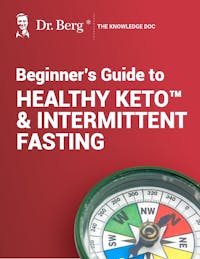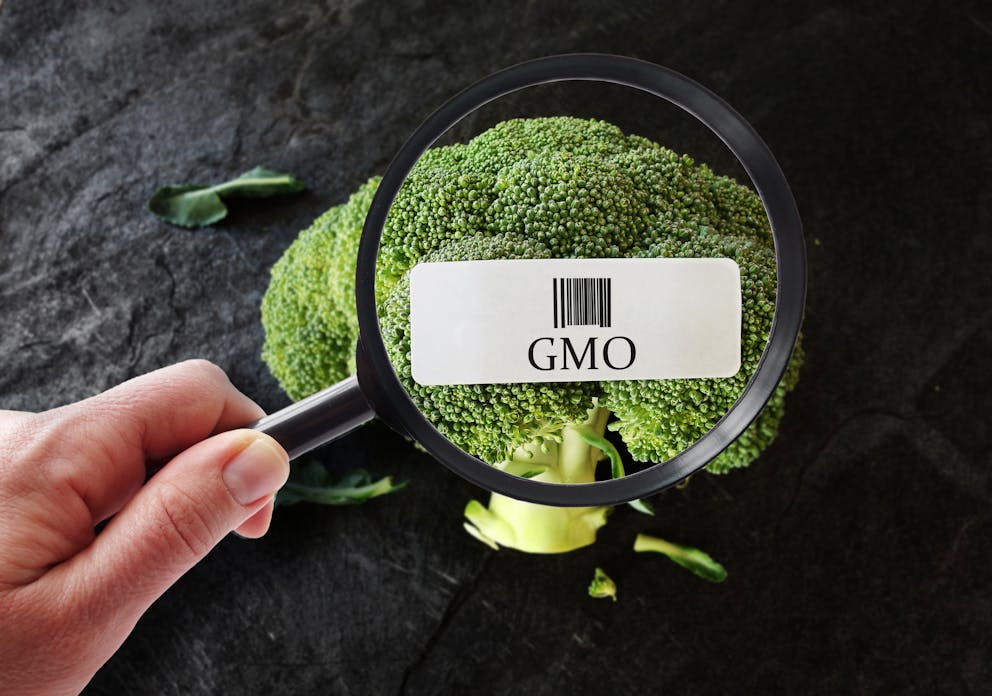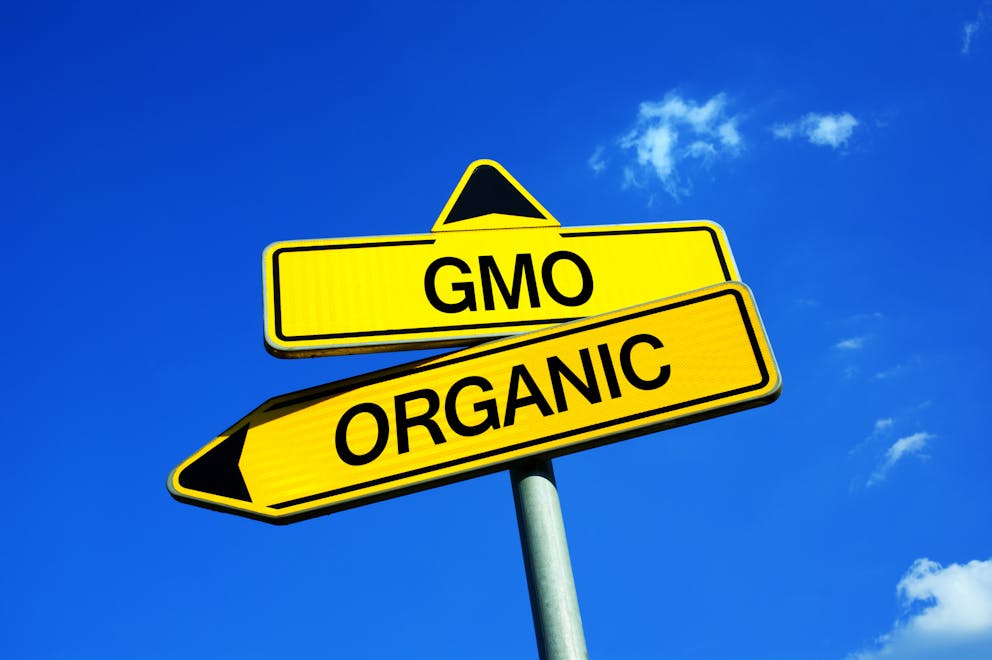Are Bioengineered Food Ingredients Bad for You?

21 Ways to Reduce Your Cancer Risk
Learn about evidence-based strategies to lower your risk of cancer
Understand the role of nutrition, sleep, and exercise in cancer prevention
Discover the dietary and lifestyle changes that make a difference
Recognize and avoid common cancer risk factors
Get practical tips on incorporating cancer-fighting foods into your daily life

21 Ways to Reduce Your Cancer Risk
Learn about evidence-based strategies to lower your risk of cancer
Understand the role of nutrition, sleep, and exercise in cancer prevention
Discover the dietary and lifestyle changes that make a difference
Recognize and avoid common cancer risk factors
Get practical tips on incorporating cancer-fighting foods into your daily life

21 Ways to Reduce Your Cancer Risk
Learn about evidence-based strategies to lower your risk of cancer
Understand the role of nutrition, sleep, and exercise in cancer prevention
Discover the dietary and lifestyle changes that make a difference
Recognize and avoid common cancer risk factors
Get practical tips on incorporating cancer-fighting foods into your daily life

21 Ways to Reduce Your Cancer Risk
Learn about evidence-based strategies to lower your risk of cancer
Understand the role of nutrition, sleep, and exercise in cancer prevention
Discover the dietary and lifestyle changes that make a difference
Recognize and avoid common cancer risk factors
Get practical tips on incorporating cancer-fighting foods into your daily life

21 Ways to Reduce Your Cancer Risk
Learn about evidence-based strategies to lower your risk of cancer
Understand the role of nutrition, sleep, and exercise in cancer prevention
Discover the dietary and lifestyle changes that make a difference
Recognize and avoid common cancer risk factors
Get practical tips on incorporating cancer-fighting foods into your daily life

21 Ways to Reduce Your Cancer Risk
Learn about evidence-based strategies to lower your risk of cancer
Understand the role of nutrition, sleep, and exercise in cancer prevention
Discover the dietary and lifestyle changes that make a difference
Recognize and avoid common cancer risk factors
Get practical tips on incorporating cancer-fighting foods into your daily life

21 Ways to Reduce Your Cancer Risk
Learn about evidence-based strategies to lower your risk of cancer
Understand the role of nutrition, sleep, and exercise in cancer prevention
Discover the dietary and lifestyle changes that make a difference
Recognize and avoid common cancer risk factors
Get practical tips on incorporating cancer-fighting foods into your daily life

21 Ways to Reduce Your Cancer Risk
Learn about evidence-based strategies to lower your risk of cancer
Understand the role of nutrition, sleep, and exercise in cancer prevention
Discover the dietary and lifestyle changes that make a difference
Recognize and avoid common cancer risk factors
Get practical tips on incorporating cancer-fighting foods into your daily life

21 Ways to Reduce Your Cancer Risk
Learn about evidence-based strategies to lower your risk of cancer
Understand the role of nutrition, sleep, and exercise in cancer prevention
Discover the dietary and lifestyle changes that make a difference
Recognize and avoid common cancer risk factors
Get practical tips on incorporating cancer-fighting foods into your daily life

21 Ways to Reduce Your Cancer Risk
Learn about evidence-based strategies to lower your risk of cancer
Understand the role of nutrition, sleep, and exercise in cancer prevention
Discover the dietary and lifestyle changes that make a difference
Recognize and avoid common cancer risk factors
Get practical tips on incorporating cancer-fighting foods into your daily life

21 Ways to Reduce Your Cancer Risk
Learn about evidence-based strategies to lower your risk of cancer
Understand the role of nutrition, sleep, and exercise in cancer prevention
Discover the dietary and lifestyle changes that make a difference
Recognize and avoid common cancer risk factors
Get practical tips on incorporating cancer-fighting foods into your daily life

21 Ways to Reduce Your Cancer Risk
Learn about evidence-based strategies to lower your risk of cancer
Understand the role of nutrition, sleep, and exercise in cancer prevention
Discover the dietary and lifestyle changes that make a difference
Recognize and avoid common cancer risk factors
Get practical tips on incorporating cancer-fighting foods into your daily life

21 Ways to Reduce Your Cancer Risk
Learn about evidence-based strategies to lower your risk of cancer
Understand the role of nutrition, sleep, and exercise in cancer prevention
Discover the dietary and lifestyle changes that make a difference
Recognize and avoid common cancer risk factors
Get practical tips on incorporating cancer-fighting foods into your daily life

21 Ways to Reduce Your Cancer Risk
Learn about evidence-based strategies to lower your risk of cancer
Understand the role of nutrition, sleep, and exercise in cancer prevention
Discover the dietary and lifestyle changes that make a difference
Recognize and avoid common cancer risk factors
Get practical tips on incorporating cancer-fighting foods into your daily life

21 Ways to Reduce Your Cancer Risk
Learn about evidence-based strategies to lower your risk of cancer
Understand the role of nutrition, sleep, and exercise in cancer prevention
Discover the dietary and lifestyle changes that make a difference
Recognize and avoid common cancer risk factors
Get practical tips on incorporating cancer-fighting foods into your daily life

21 Ways to Reduce Your Cancer Risk
Learn about evidence-based strategies to lower your risk of cancer
Understand the role of nutrition, sleep, and exercise in cancer prevention
Discover the dietary and lifestyle changes that make a difference
Recognize and avoid common cancer risk factors
Get practical tips on incorporating cancer-fighting foods into your daily life

21 Ways to Reduce Your Cancer Risk
Learn about evidence-based strategies to lower your risk of cancer
Understand the role of nutrition, sleep, and exercise in cancer prevention
Discover the dietary and lifestyle changes that make a difference
Recognize and avoid common cancer risk factors
Get practical tips on incorporating cancer-fighting foods into your daily life

21 Ways to Reduce Your Cancer Risk
Learn about evidence-based strategies to lower your risk of cancer
Understand the role of nutrition, sleep, and exercise in cancer prevention
Discover the dietary and lifestyle changes that make a difference
Recognize and avoid common cancer risk factors
Get practical tips on incorporating cancer-fighting foods into your daily life

21 Ways to Reduce Your Cancer Risk
Learn about evidence-based strategies to lower your risk of cancer
Understand the role of nutrition, sleep, and exercise in cancer prevention
Discover the dietary and lifestyle changes that make a difference
Recognize and avoid common cancer risk factors
Get practical tips on incorporating cancer-fighting foods into your daily life

21 Ways to Reduce Your Cancer Risk
Learn about evidence-based strategies to lower your risk of cancer
Understand the role of nutrition, sleep, and exercise in cancer prevention
Discover the dietary and lifestyle changes that make a difference
Recognize and avoid common cancer risk factors
Get practical tips on incorporating cancer-fighting foods into your daily life

21 Ways to Reduce Your Cancer Risk
Learn about evidence-based strategies to lower your risk of cancer
Understand the role of nutrition, sleep, and exercise in cancer prevention
Discover the dietary and lifestyle changes that make a difference
Recognize and avoid common cancer risk factors
Get practical tips on incorporating cancer-fighting foods into your daily life

21 Ways to Reduce Your Cancer Risk
Learn about evidence-based strategies to lower your risk of cancer
Understand the role of nutrition, sleep, and exercise in cancer prevention
Discover the dietary and lifestyle changes that make a difference
Recognize and avoid common cancer risk factors
Get practical tips on incorporating cancer-fighting foods into your daily life

21 Ways to Reduce Your Cancer Risk
Learn about evidence-based strategies to lower your risk of cancer
Understand the role of nutrition, sleep, and exercise in cancer prevention
Discover the dietary and lifestyle changes that make a difference
Recognize and avoid common cancer risk factors
Get practical tips on incorporating cancer-fighting foods into your daily life

21 Ways to Reduce Your Cancer Risk
Learn about evidence-based strategies to lower your risk of cancer
Understand the role of nutrition, sleep, and exercise in cancer prevention
Discover the dietary and lifestyle changes that make a difference
Recognize and avoid common cancer risk factors
Get practical tips on incorporating cancer-fighting foods into your daily life

Beginner’s Guide to Healthy Keto & Intermittent Fasting
Receive a step-by-step guide to starting Healthy Keto® and intermittent fasting
Learn about foundational principles and best practices for beginners
Get detailed visual guidance on portion sizes and meal composition
Discover how to set achievable goals and monitor your progress
Find practical tips for overcoming common challenges and staying motivated

Beginner’s Guide to Healthy Keto & Intermittent Fasting
Receive a step-by-step guide to starting Healthy Keto® and intermittent fasting
Learn about foundational principles and best practices for beginners
Get detailed visual guidance on portion sizes and meal composition
Discover how to set achievable goals and monitor your progress
Find practical tips for overcoming common challenges and staying motivated

Beginner’s Guide to Healthy Keto & Intermittent Fasting
Receive a step-by-step guide to starting Healthy Keto® and intermittent fasting
Learn about foundational principles and best practices for beginners
Get detailed visual guidance on portion sizes and meal composition
Discover how to set achievable goals and monitor your progress
Find practical tips for overcoming common challenges and staying motivated

Beginner’s Guide to Healthy Keto & Intermittent Fasting
Receive a step-by-step guide to starting Healthy Keto® and intermittent fasting
Learn about foundational principles and best practices for beginners
Get detailed visual guidance on portion sizes and meal composition
Discover how to set achievable goals and monitor your progress
Find practical tips for overcoming common challenges and staying motivated

Beginner’s Guide to Healthy Keto & Intermittent Fasting
Receive a step-by-step guide to starting Healthy Keto® and intermittent fasting
Learn about foundational principles and best practices for beginners
Get detailed visual guidance on portion sizes and meal composition
Discover how to set achievable goals and monitor your progress
Find practical tips for overcoming common challenges and staying motivated

Beginner’s Guide to Healthy Keto & Intermittent Fasting
Receive a step-by-step guide to starting Healthy Keto® and intermittent fasting
Learn about foundational principles and best practices for beginners
Get detailed visual guidance on portion sizes and meal composition
Discover how to set achievable goals and monitor your progress
Find practical tips for overcoming common challenges and staying motivated

Beginner’s Guide to Healthy Keto & Intermittent Fasting
Receive a step-by-step guide to starting Healthy Keto® and intermittent fasting
Learn about foundational principles and best practices for beginners
Get detailed visual guidance on portion sizes and meal composition
Discover how to set achievable goals and monitor your progress
Find practical tips for overcoming common challenges and staying motivated

Beginner’s Guide to Healthy Keto & Intermittent Fasting
Receive a step-by-step guide to starting Healthy Keto® and intermittent fasting
Learn about foundational principles and best practices for beginners
Get detailed visual guidance on portion sizes and meal composition
Discover how to set achievable goals and monitor your progress
Find practical tips for overcoming common challenges and staying motivated

Beginner’s Guide to Healthy Keto & Intermittent Fasting
Receive a step-by-step guide to starting Healthy Keto® and intermittent fasting
Learn about foundational principles and best practices for beginners
Get detailed visual guidance on portion sizes and meal composition
Discover how to set achievable goals and monitor your progress
Find practical tips for overcoming common challenges and staying motivated

Beginner’s Guide to Healthy Keto & Intermittent Fasting
Receive a step-by-step guide to starting Healthy Keto® and intermittent fasting
Learn about foundational principles and best practices for beginners
Get detailed visual guidance on portion sizes and meal composition
Discover how to set achievable goals and monitor your progress
Find practical tips for overcoming common challenges and staying motivated

Beginner’s Guide to Healthy Keto & Intermittent Fasting
Receive a step-by-step guide to starting Healthy Keto® and intermittent fasting
Learn about foundational principles and best practices for beginners
Get detailed visual guidance on portion sizes and meal composition
Discover how to set achievable goals and monitor your progress
Find practical tips for overcoming common challenges and staying motivated

Beginner’s Guide to Healthy Keto & Intermittent Fasting
Receive a step-by-step guide to starting Healthy Keto® and intermittent fasting
Learn about foundational principles and best practices for beginners
Get detailed visual guidance on portion sizes and meal composition
Discover how to set achievable goals and monitor your progress
Find practical tips for overcoming common challenges and staying motivated

Beginner’s Guide to Healthy Keto & Intermittent Fasting
Receive a step-by-step guide to starting Healthy Keto® and intermittent fasting
Learn about foundational principles and best practices for beginners
Get detailed visual guidance on portion sizes and meal composition
Discover how to set achievable goals and monitor your progress
Find practical tips for overcoming common challenges and staying motivated

Beginner’s Guide to Healthy Keto & Intermittent Fasting
Receive a step-by-step guide to starting Healthy Keto® and intermittent fasting
Learn about foundational principles and best practices for beginners
Get detailed visual guidance on portion sizes and meal composition
Discover how to set achievable goals and monitor your progress
Find practical tips for overcoming common challenges and staying motivated

Beginner’s Guide to Healthy Keto & Intermittent Fasting
Receive a step-by-step guide to starting Healthy Keto® and intermittent fasting
Learn about foundational principles and best practices for beginners
Get detailed visual guidance on portion sizes and meal composition
Discover how to set achievable goals and monitor your progress
Find practical tips for overcoming common challenges and staying motivated

Beginner’s Guide to Healthy Keto & Intermittent Fasting
Receive a step-by-step guide to starting Healthy Keto® and intermittent fasting
Learn about foundational principles and best practices for beginners
Get detailed visual guidance on portion sizes and meal composition
Discover how to set achievable goals and monitor your progress
Find practical tips for overcoming common challenges and staying motivated

Beginner’s Guide to Healthy Keto & Intermittent Fasting
Receive a step-by-step guide to starting Healthy Keto® and intermittent fasting
Learn about foundational principles and best practices for beginners
Get detailed visual guidance on portion sizes and meal composition
Discover how to set achievable goals and monitor your progress
Find practical tips for overcoming common challenges and staying motivated

Beginner’s Guide to Healthy Keto & Intermittent Fasting
Receive a step-by-step guide to starting Healthy Keto® and intermittent fasting
Learn about foundational principles and best practices for beginners
Get detailed visual guidance on portion sizes and meal composition
Discover how to set achievable goals and monitor your progress
Find practical tips for overcoming common challenges and staying motivated

Beginner’s Guide to Healthy Keto & Intermittent Fasting
Receive a step-by-step guide to starting Healthy Keto® and intermittent fasting
Learn about foundational principles and best practices for beginners
Get detailed visual guidance on portion sizes and meal composition
Discover how to set achievable goals and monitor your progress
Find practical tips for overcoming common challenges and staying motivated

Beginner’s Guide to Healthy Keto & Intermittent Fasting
Receive a step-by-step guide to starting Healthy Keto® and intermittent fasting
Learn about foundational principles and best practices for beginners
Get detailed visual guidance on portion sizes and meal composition
Discover how to set achievable goals and monitor your progress
Find practical tips for overcoming common challenges and staying motivated

Beginner’s Guide to Healthy Keto & Intermittent Fasting
Receive a step-by-step guide to starting Healthy Keto® and intermittent fasting
Learn about foundational principles and best practices for beginners
Get detailed visual guidance on portion sizes and meal composition
Discover how to set achievable goals and monitor your progress
Find practical tips for overcoming common challenges and staying motivated

Beginner’s Guide to Healthy Keto & Intermittent Fasting
Receive a step-by-step guide to starting Healthy Keto® and intermittent fasting
Learn about foundational principles and best practices for beginners
Get detailed visual guidance on portion sizes and meal composition
Discover how to set achievable goals and monitor your progress
Find practical tips for overcoming common challenges and staying motivated

Beginner’s Guide to Healthy Keto & Intermittent Fasting
Receive a step-by-step guide to starting Healthy Keto® and intermittent fasting
Learn about foundational principles and best practices for beginners
Get detailed visual guidance on portion sizes and meal composition
Discover how to set achievable goals and monitor your progress
Find practical tips for overcoming common challenges and staying motivated
Crops produced through genetic modification are used abundantly by food manufacturers, but are bioengineered food ingredients bad for you?
Despite claims that genetically engineered foods are safe, increasingly more evidence suggests that bioengineered ingredients may pose risks to human health.
Learn how to avoid bioengineered foods and discover surprising sources of genetically modified ingredients.

What is bioengineered food?
Bioengineered food, also known as genetically modified food or genetically modified organisms (GMOs), refers to food that has been genetically altered to increase its resistance to pests and herbicides or to improve nutrient content or shelf life.
While most GMO foods are bioengineered plants such as soy, corn, or cottonseed, biotechnologies have also been applied to certain livestock animals such as pigs and salmon to speed up growth and enhance disease resistance.
GMOs are created by inserting genes encoding specific desirable traits into the genome of the organisms using bioengineering techniques such as gene editing or genetic engineering.
Since the invention of bioengineered crops, their cultivation has become widespread. Today, as much as 94 percent of soybeans and 90 percent of corn produced in the United States are GMOs.
Because GMO crops can be more resistant to drought, pests, and other environmental factors, they were hailed as a solution to world hunger.
While bioengineered plant species have helped achieve a more reliable food supply in certain regions of the world, research published in PLOS ONE found that genetically engineered crops alone did not solve food insecurity on a larger scale.
Watch the video below to learn why you should avoid GMO foods.
Genetically Modified Foods
Possible risk of bioengineered food
According to a statement released by the World Health Organization (WHO), “GMO foods currently available on the international market have passed safety assessments and are not likely to present risks for human health.”
However, independent research found conflicting evidence, questioning whether bioengineered food products are safe for human consumption.
Many GMO crops have been modified with genes resistant to antibiotics, and there are concerns that consuming this genetic material can increase the risk of antibiotic resistance in humans.
In addition, most bioengineered plants are designed to withstand herbicides, a group of toxic chemicals that kill weeds and other unwanted plants to increase crop yield.
This means that GMO food crops are typically exposed to high concentrations of weed killers such as glyphosate, which can penetrate the plant and lead to herbicide residues in the final food product.
“Herbicides aren’t safe for humans,” explains Dr. Berg. “These toxic compounds are linked to an increased risk of cancer, hormone imbalances, poor liver function, and digestive issues.”
This has been confirmed by research published in the International Journal of Molecular Sciences, highlighting the toxic effects of herbicides on the central nervous system.
The authors summarize that glyphosate can impair neuronal function and contribute to inflammation. This may also explain why individuals regularly exposed to glyphosate are at increased risk of neurodegenerative conditions, including Alzheimer's and Parkinson's disease.

Are bioengineered food ingredients harmful?
Regularly consuming GMO products exposes the body to modified foreign genes, which raises concerns about potential health risks.
A study published in Environmental Sciences Europe investigated the food safety and long-term health effects of GMOs and concluded that GMO consumption is associated with an increased risk of cancer, infertility, decreased cognitive functions, and overall higher mortality rates.
Although much research on the health impacts of GMOs has been conducted on animals, these studies offer valuable insight into the long-term and multi-generational effects of genetically modified food intake.
GMO food consumption has been associated with an increased risk of various health issues:
Intestinal inflammation
Infertility
Birth defects
Antibiotic resistance
Insulin resistance
Diabetes
Breast, liver, and kidney cancer
Poor cognitive function
Neurodegenerative diseases
Hormone imbalances
In addition, various GMO crops are genetically modified to produce certain proteins to protect against insect infestation and microbial pests.
Many of these proteins are novel, and the human body has historically not been exposed to them, which may explain why many individuals are allergic or sensitive to genetically modified ingredients.

How to avoid bioengineered foods
Because of the potential health risks associated with consuming GMOs, many people seek to avoid products containing bioengineered food ingredients.
Here are five steps you can take to minimize your exposure to GMOs.
1. Check labels
The National Bioengineered Food Disclosure Standard (NBFDS) requires that food products containing GMO ingredients carry bioengineered food labels or symbols.
However, several GMO foods are exempt from this law, and food producers aren’t required to label genetically modified animal products or highly refined ingredients such as oils, sugars, and syrups derived from bioengineered soybeans, corn, and sugar beets.
This can make it challenging for consumers to identify foods containing genetically modified crops.
Rather than relying on bioengineered food labels, look for products containing the Non-GMO Project Verified seal.
The Non-GMO Project is a non-profit organization that offers a verification program to food manufacturers to obtain non-GMO certification and the approval to use the non-GMO Project seal.
2. Choose organic products
Organic certification regulations strictly prohibit the use of GMO seeds, crops, or GMO-containing animal feed. This makes organic products an excellent choice for those who are trying to avoid bioengineered food ingredients.

3. Cook at home
Cooking organic whole foods at home is another great strategy to reduce the consumption of GMOs.
Home cooking not only allows you to know exactly what’s in the foods you are eating but also minimizes the consumption of restaurant and processed foods, often prepared using bioengineered ingredients.
Restaurants are not required to provide information on the use of genetically modified ingredients, leaving the consumer in the dark about the GMO content of their foods.
4. Shop at local farmer’s markets
Local farmer's markets tend to sell produce from small-scale farming operations that typically don’t use GMO seeds to grow their produce.
In contrast to large food production companies, local farmers often practice sustainable farming practices and focus on biodiverse crops, making the use of GMO seeds both unnecessary and counterproductive.
However, not all farmers avoid genetically modified seeds or raise animals fed with GMO-containing fodder, and it’s crucial to talk to your local farmers to learn about their farming practices.
Interestingly, many farmers are switching from GMO crops to organic farming due to ongoing concerns about the long-term effects of GMOs on the environment and human health.
5. Avoid processed foods
Many processed foods contain bioengineered ingredients such as oils, sugars, high fructose corn syrup, and emulsifiers derived from GMO crops.
Processed food labels don’t have to disclose the use of certain bioengineered ingredients, and their often long and complex ingredient lists can make it difficult to identify potential GMOs.

Bioengineered foods list
The U.S. Department of Agriculture (USDA) has released a bioengineered food list to inform consumers of GMO crops or genetically modified foods that are widely available.
Here’s the USDA bioengineered food list:
Alfalfa
Apple (ArcticTM varieties)
Canola
Corn
Cotton
Eggplant
Papaya
Pink flesh pineapple
Potato
Salmon (AquAdvantage®)
Soybean
Summer squash
Sugar beet
Sugar cane
It’s important to remember that staple GMO crops such as canola, corn, cottonseed, sugar beet, and sugar cane are excessively used in processed food manufacturing, and over 80 percent of processed and packaged foods are estimated to contain genetically modified ingredients.
Here are common foods and ingredients likely to contain GMOs:
Corn syrup, corn starch, corn oil, and cornmeal
Soybean oil, soy lecithin, soy protein, and tofu
Margarine
Baked goods and desserts
Salad dressings
Mayonnaise
Soft drinks
Deli meats
Frozen processed meat products
Candies
Oatmeal
Instant formula
In addition, milk, butter, cheese, and ice cream can be surprising sources of GMOs. While dairy cattle are not genetically modified, dairy products from animals raised on genetically modified feed may contain GMOs.

Key takeaways
Are bioengineered food ingredients bad for you?
Yes, plenty of scientific evidence suggests that consuming genetically modified or bioengineered foods is associated with an increased risk of hormonal issues, infertility, poor cognition, allergies, cancer, and kidney and liver problems.
Choosing organic whole foods and minimally processed food products verified by the Non-GMO Project while avoiding processed foods is an excellent strategy to reduce exposure to bioengineered ingredients.
FAQ
1. Are bioengineered food ingredients harmful?
Many bioengineered food crops contain genetic material to make them resistant to antibiotics, potentially increasing the risk of antibiotic resistance in humans.
They also are often treated with high concentrations of herbicides, leading to herbicide residues in genetically modified food products. Herbicide exposure has been linked to cancer, may impair neuronal function, and may contribute to neurodegenerative conditions.
2. What are the side effects of bioengineered food?
Evidence suggests that long-term consumption of bioengineered foods may increase the risk of infertility, certain cancers, neurodegenerative diseases, and kidney and liver problems.
In addition, many genetically modified organisms (GMOs) are designed to produce proteins to repel pests and diseases. Some of these proteins can activate immune responses, which may explain why GMO-containing foods are common allergy triggers.
3. How do you know if a food is bioengineered?
While many GMO foods have to carry a bioengineered food label, certain processed ingredients derived from genetically modified crops, such as corn, canola, cottonseed, or sugar cane, don’t have to be declared as bioengineered on the product label.
Given that more than 80 percent of processed foods contain GMO ingredients, it’s likely that packaged food products are bioengineered unless they carry the Non-GMO Project verification seal.
4. What’s the difference between bioengineered food and GMOs?
The terms bioengineered foods and GMOs are generally used interchangeably, although they have slight differences.
GMOs refer to organisms that contain genetically modified material. In contrast, bioengineering covers GMO techniques and other genetic engineering methods, including gene editing and synthetic biology applications.
5. How do you avoid bioengineered ingredients?
Because bioengineered crops are widely used in food manufacturing, it can be challenging to avoid genetically modified ingredients.
Avoiding processed foods and opting for organic whole foods and packaged food products certified by the Non-GMO Project can help reduce exposure to bioengineered ingredients and minimize the potential health risks associated with GMO-containing food consumption.
Sources
https://www.who.int/news-room/questions-and-answers/item/food-genetically-modified
https://enveurope.springeropen.com/articles/10.1186/s12302-021-00578-9
https://www.ams.usda.gov/rules-regulations/be/bioengineered-foods-list
Previous blog
15 Keto Zucchini Recipes You Must Try
Popular
08/21/2024
55K views
02/23/2025
46.3K views
11/18/2024
277.5K views
03/18/2024
11/21/2022




